HEAs are composed of five or more elements in approximately equal proportions, unlike conventional alloys with one or two main components. HEAs exhibit many desirable properties, making them highly regarded in materials science and engineering. Conventional alloys, such as iron-based alloys, are prone to embrittlement under irradiation conditions, leading to a decline in operational performance. HEAs demonstrate excellent radiation resistance and high-temperature mechanical performance in nuclear reactor irradiation conditions. due to their unique metal composition and microstructure.
The team discovered that the elements in HEAs do not have a completely random distribution; instead, they form a structure known as SRO. This structure influences the performance of the alloy under irradiation conditions via two main processes: disorder caused by cascade collisions and order induced by thermally activated atomic diffusion (Figs. 1~3). The study indicates that the SROs of its associated element pairs recover faster after irradiation due to the lower vacancy migration barrier of the Mn element. The differences in the destruction rates of SROs for all element pairs are relatively small under irradiation. This leads the SROs in HEAs being in a thermodynamically non-equilibrium state under specific irradiation conditions (Figs. 4~6).
This groundbreaking research provides crucial theoretical support for understanding the behavior and performance of HEAs under irradiation conditions. Moreover, it opens new directions for developing candidate materials for the next generation of nuclear reactors. Future fourth-generation advanced nuclear reactors will operate over a wide range of temperatures and doses, requiring materials to maintain stable performance under extreme conditions. The outstanding performance of HEAs makes them highly promising candidates for applications in such extreme conditions. The work, titled "Element-dependent evolution of chemical short-range ordering tendency of NiCoFeCrMn under irradiation," was published in the December 2023 issue of the "International Journal of Plasticity." The journal is a top-tier publication in the field of mechanics, with a Chinese Academy of Sciences ranking of 1 and an impact factor of 8.5. Professor Qing Peng, Assistant Professor Tan Shi, and Professor Chenyang Lu are the co-corresponding authors of this work.
The research received fundings from National Key Research and Development Program of China, the Innovative Scientific Program of China National Nuclear Corporation, High-level Innovation Research Institute Program of Guangdong Province, the LiYing Program of the Institute of Mechanics, Chinese Academy of Sciences, etc. The article link is available at: https://doi.org/10.1016/j.ijplas.2023.103768.
In conclusion, this research not only enhances our understanding of the potential value of HEAs in nuclear reactor applications but also provides new insights and methods for developing high-performance materials better suited for the operating environment of advanced nuclear reactors. It is expected that achievements emerge on the application of high-entropy alloys in nuclear reactors and other critical fields, exploring the potential value and prospects of this novel material.
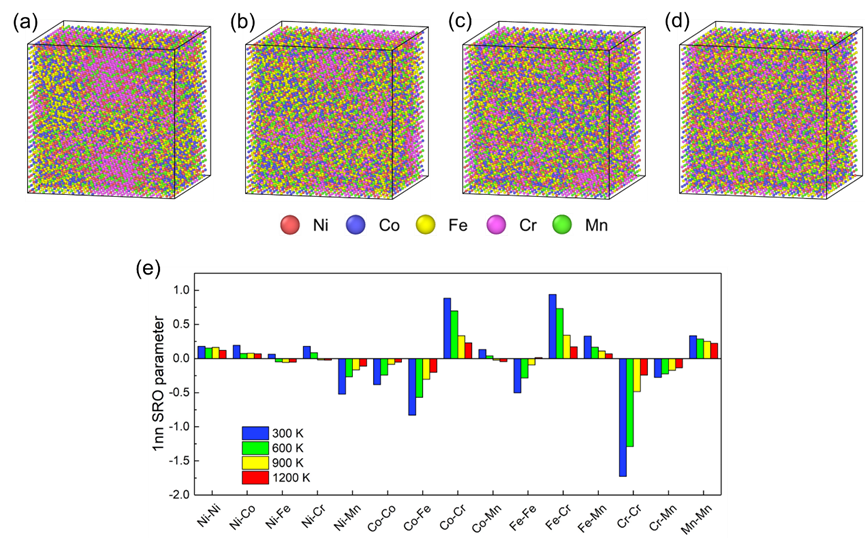
Fig. 1. Atomistic structures of NiCoFeCrMn annealed at (a) 300 K, (b) 600 K, (c) 900 K and (d) 1200 K. (e) First nearest-neighbor SRO parameters of different element pairs at annealing temperatures of 300 K - 1200 K.
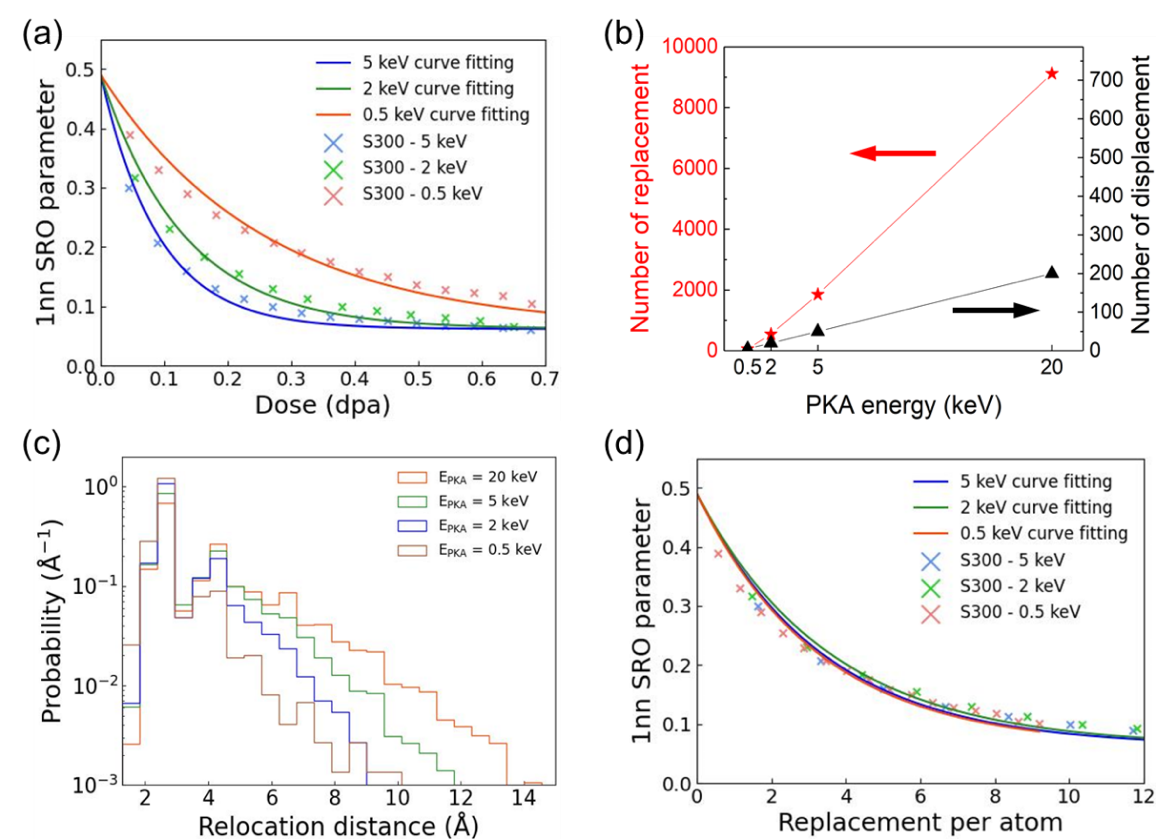
Fig. 2. (a) Evolution of the global SRO parameter as a function of the dpa calculated by the NRT model. (b) The average number of atom replacement and displacement in a single cascade as a function of PKA energy. (c) Relocated distance distribution with various PKA energies. (d) Evolution of the global SRO parameter as a function of the replacement-per-atom (rpa).
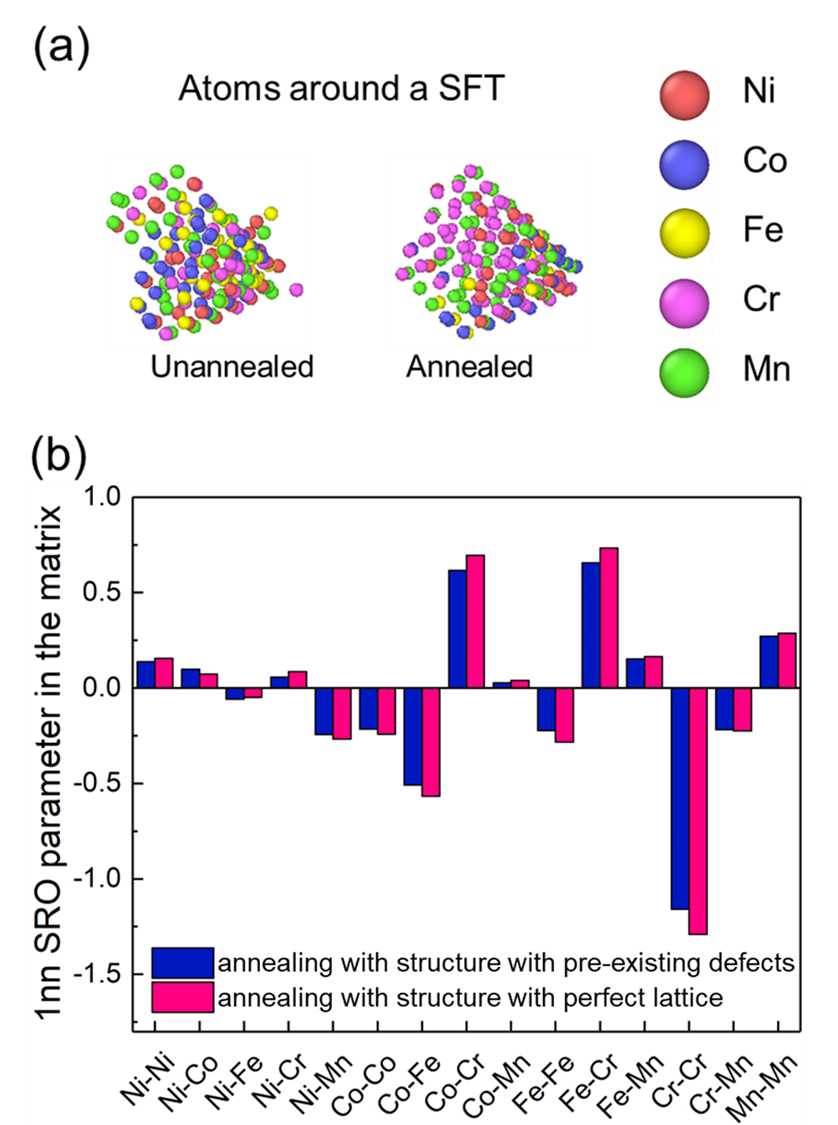
Fig. 3. (a) Local element distribution of a representative stacking fault tetrahedron before and after annealing. (b) Comparison of 1nn SRO parameters in the matrix after MC + MD simulation for structure with pre-existing defects generated from cascade overlapping simulations and for structure of perfect lattice.
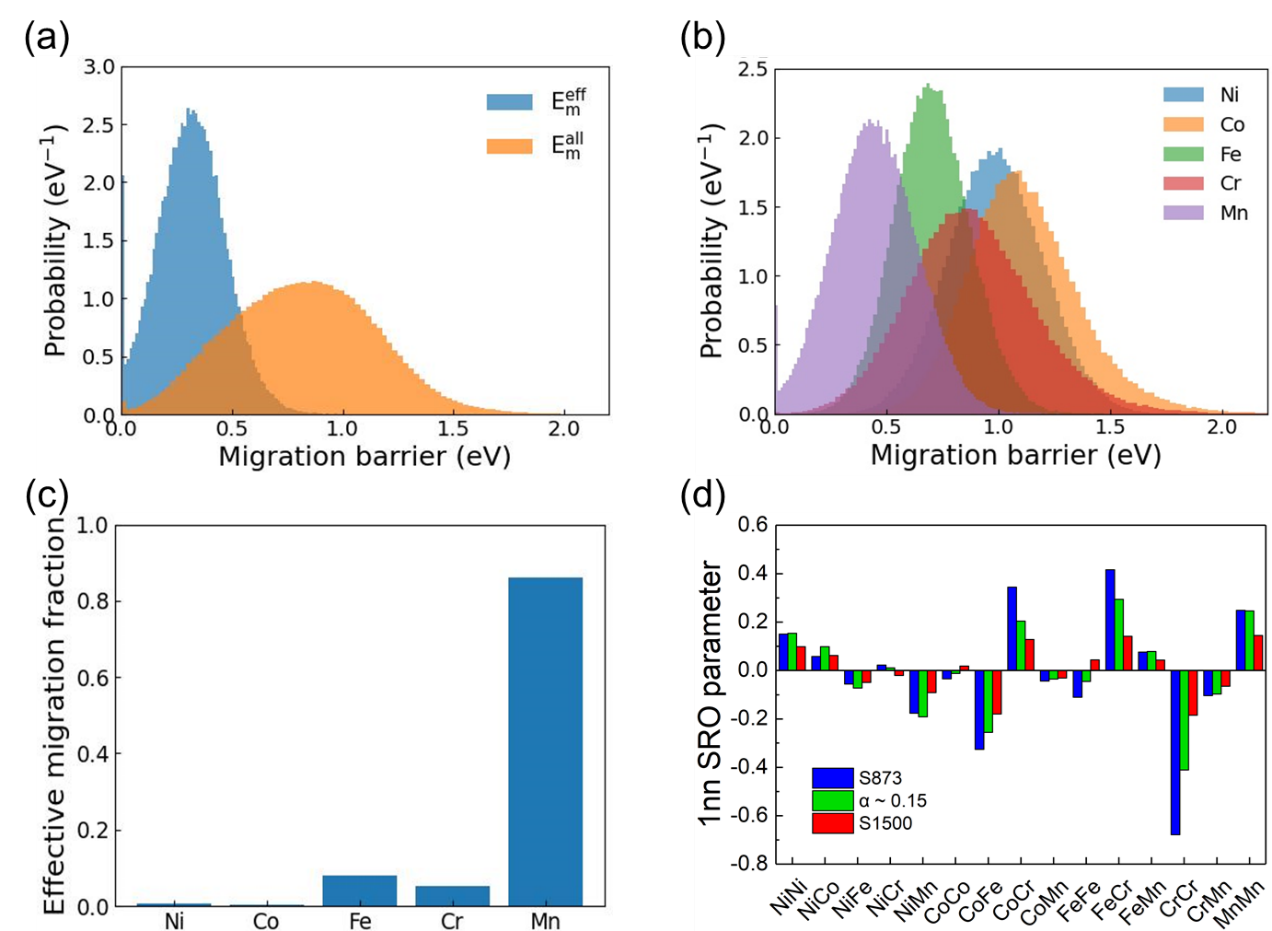
Fig. 4. (a) The migration barrier distribution of all the sampled migration paths (orange) and the events that effectively occur in kMC simulations (blue) at 873 K. (b) The migration barrier distribution of each element based on all the sampled migration paths. (c) The effective migration fraction of different elements during kMC simulations. (d) The SRO parameters of different element pairs at equilibrium states of 873 K (S873), 1500 K (S1500) and at an intermediate transient state from kMC simulations (green).
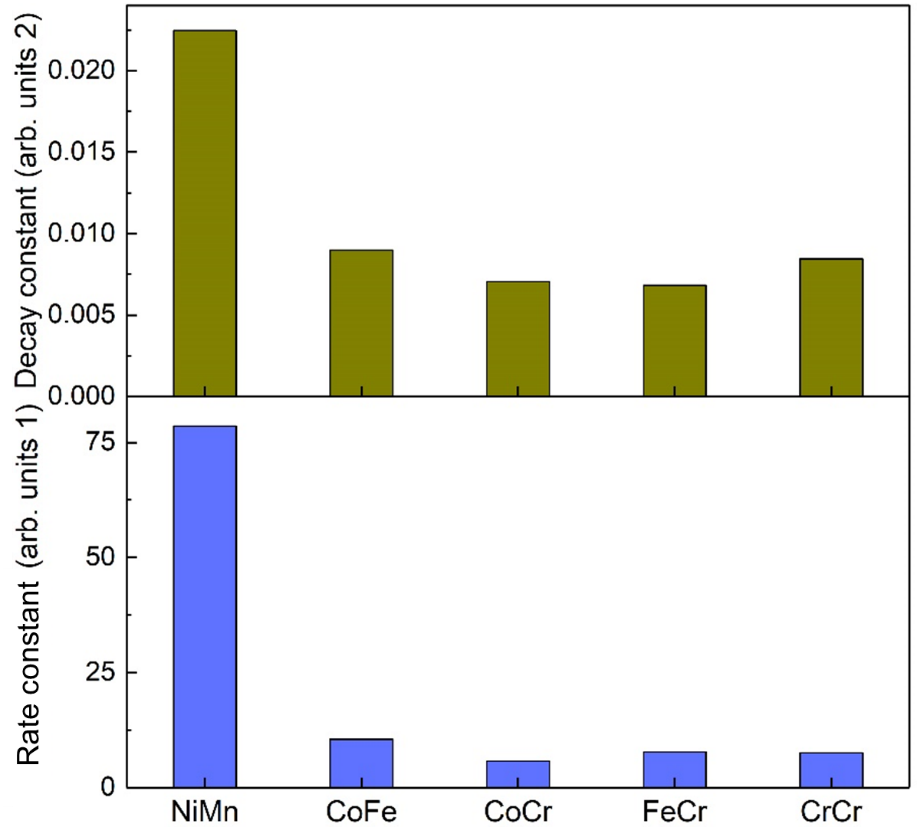
Fig. 5. Comparison of the rate constants in the SRO destruction (upper) and recovery (lower) process for five element pairs that have the most pronounced SRO degrees.
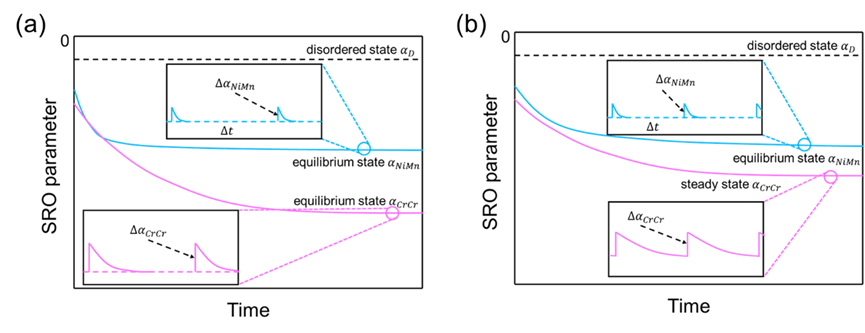
Fig. 6. Schematic evolution of SRO under the continuous competition of destruction and recovery. The following conditions are assumed for this qualitative estimation: (a) the initial structure is annealed at 1100 K, the irradiation dose rate is 10-8 dpa/s, the steady vacancy concentration is 10-8 . (b) the initial structure is annealed at 1100 K, the irradiation dose rate is 10-3 dpa/s, the steady vacancy concentration is 10-5. The irradiation temperature is 573 K for both scenarios.